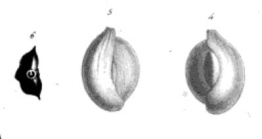WoRMS taxon details
Adelosina partschii (d'Orbigny, 1846)
990645 (urn:lsid:marinespecies.org:taxname:990645)
accepted
Species
Adelosina partschi (d'Orbigny, 1846) · unaccepted (Incorrect subsequent spelling in...)
Incorrect subsequent spelling in Cimerman and Langer (1991)
Quinqueloculina partschii d'Orbigny, 1846 · unaccepted (Opinion of Cimerman and Langer (1991))
marine, brackish, fresh, terrestrial
recent + fossil
(of Quinqueloculina partschii d'Orbigny, 1846) Orbigny, A. D. d'. (1846). Die fossilen Foraminiferen des tertiären Beckens von Wien. Foraminifères fossiles du bassin tertiaire de Vienne. 312 p., available online at https://archive.org/details/bub_gb_JKpAAAAAcAAJ
page(s): p. 293 pl. 19 fig. 4-6 [details]
page(s): p. 293 pl. 19 fig. 4-6 [details]
Hayward, B.W.; Le Coze, F.; Vachard, D.; Gross, O. (2025). World Foraminifera Database. Adelosina partschii (d'Orbigny, 1846). Accessed through: World Register of Marine Species at: https://www.marinespecies.org/aphia.php?p=taxdetails&id=990645 on 2025-04-04
Date
action
by
![]() The webpage text is licensed under a Creative Commons
Attribution 4.0 License
The webpage text is licensed under a Creative Commons
Attribution 4.0 License
Nomenclature
original description
(of Quinqueloculina partschii d'Orbigny, 1846) Orbigny, A. D. d'. (1846). Die fossilen Foraminiferen des tertiären Beckens von Wien. Foraminifères fossiles du bassin tertiaire de Vienne. 312 p., available online at https://archive.org/details/bub_gb_JKpAAAAAcAAJ
page(s): p. 293 pl. 19 fig. 4-6 [details]
page(s): p. 293 pl. 19 fig. 4-6 [details]
 Present
Present  Present in aphia/obis/gbif/idigbio
Present in aphia/obis/gbif/idigbio  Inaccurate
Inaccurate  Introduced: alien
Introduced: alien  Containing type locality
Containing type locality
From editor or global species database
Synonymy As well documented by Vénec-Peyré and Poignant (2010), Papp and Schmid (1985) based their revision of d'Orbigny's Foraminifera from the Vienna basin (1846) only on one of the four existing collections namely the rediscovered Vienna collection while the syntypes are to be found in Paris (MNHN).Papp and Schmid put Quinqueloculina partschii into synonymy with Q. peregrina on this sole basis.
The stratigraphic range of those two species differs; Q. peregrina being a Miocene species with no known recent record while Q. partschii has been described from the Miocene with numerous recent records especially in the Mediterranean sea where it is accepted in the genus Adelosina since Cimerman and Langer (1991). [details]


